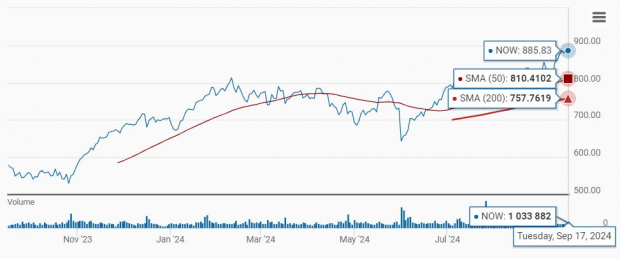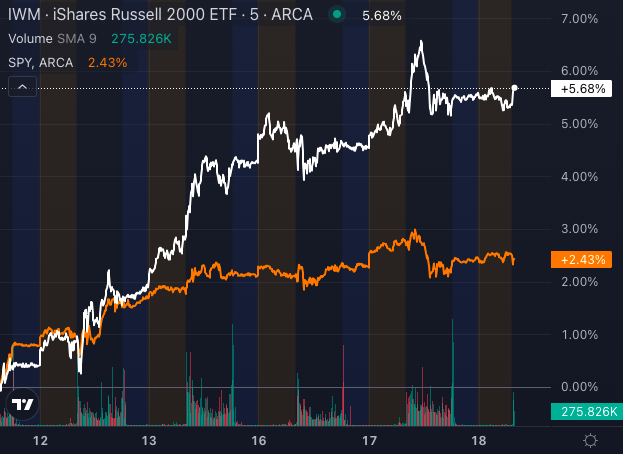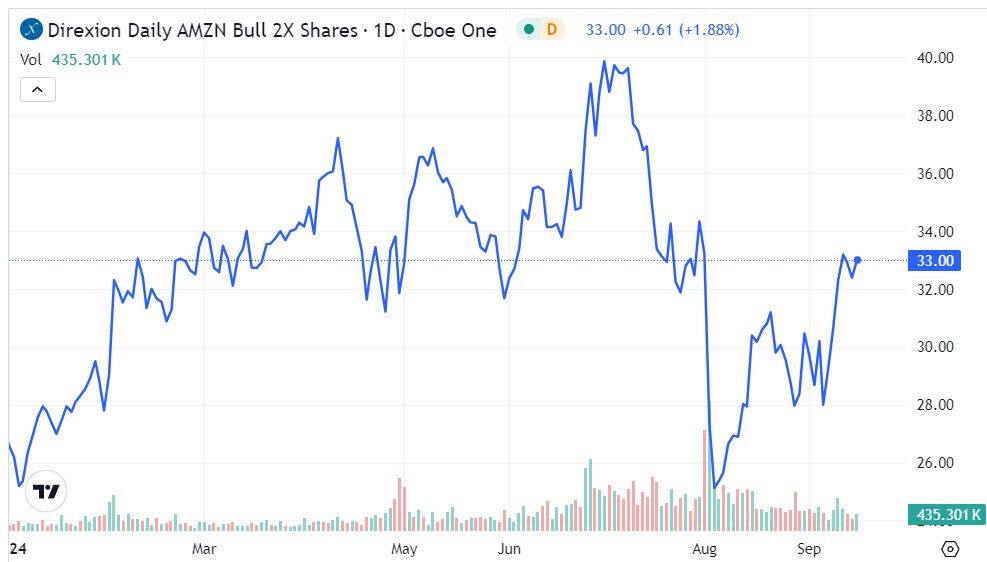Retail Sales Surge and Rate Cut Expectations Rise
Despite expectations, recent retail sales figures have surpassed estimates, fueling speculation regarding the possibility of a Federal Reserve rate cut. The strong performance in retail sales has potentially complicated the case for a rate decrease. While the market is pricing in a high probability of a rate cut in September, recent economic data might indicate otherwise. The Fed typically responds to weak economic conditions or subdued inflation, neither of which align with the current robust retail sales data. With consumer spending proving resilient, the Fed may lean towards maintaining current rates to prevent exacerbating inflation further.
Jobless Claims Increase and the Labor Market Cools Down
The recent surge in jobless claims, exceeding initial estimates, signals a potential cooling in the labor market. This trend is significant as the unemployment rate climbs to its highest level since January 2022. The Federal Reserve faces increasing pressure to consider rate cuts amidst these developments. However, the Fed’s decision must consider its dual mandate of managing inflation and unemployment. With inflation still below the 2% target and rising unemployment rates, the Fed faces a delicate balancing act to navigate the economic landscape.
Impact on Tech Stocks: The Magnificent Seven’s Turbulent Week
Following a period of economic uncertainty, tech stocks witnessed a sharp decline, influenced by external factors such as geopolitical statements and cybersecurity concerns. The market observed a sell-off in leading tech companies, reflecting vulnerabilities in the sector. The tech sector, previously soaring to great heights, experienced a notable downturn, raising concerns about overvaluation. Earnings reports in the upcoming weeks will provide crucial insights into the market’s trajectory and the performance of tech giants.
China’s Economic Measures: Injecting Liquidity Into the Banking Sector
Amid deflationary pressures and challenges in the property market, China has taken decisive steps to stabilize its economy. The injection of significant liquidity into the banking system by the People’s Bank of China signifies a proactive approach to address economic uncertainties. This move aims to mitigate risks stemming from a banking crisis and support economic resilience in the face of ongoing challenges.
Analyzing Financial Challenges and Market Trends
Chinese Banks Under Pressure
Recent reports indicate that 40 Chinese banks have faced collapse, raising concerns about the stability of the banking sector. The vulnerability of these financial institutions stems from malinvestment and a sharp decline in profits. Net interest margins have sunk to historic lows, hitting a meager 1.73% by September 2023.
Financial Landscape in China
The banking crisis in China mirrors past economic struggles witnessed in other regions. The current scenario reflects an unsettling reality – an intricate web of highly indebted private debt bubbles on the brink of bursting. The aftermath of years of artificial support for the housing market is beginning to unfold in a slow-motion unraveling of malinvestment.
US Treasury Auctions Signals Warning Signs
Amid the global economic turbulence, the US Treasury auctions are painting a worrisome picture. There is a visible trend towards larger and weaker auctions, indicating challenges in sustaining government spending levels. Auction dynamics serve as a barometer for the fiscal health of the nation, revealing patterns akin to troubled economies of the past.
Implications for Investors
The shift towards short-term debt issuance by Treasury Secretary Janet Yellen raises concerns reminiscent of hyperinflation episodes in Zimbabwe and Venezuela. Swift refinancing needs and escalating auction sizes pose inherent risks. Investors must closely monitor metrics like bid-to-cover ratios and auction tails to gauge market demand and potential fluctuations in bond yields.
Balancing Tax Receipts and Government Spending
The juxtaposition of tax collections against escalating government expenditures underscores a growing fiscal imbalance. While tax revenues have surged to $5 trillion, surpassing previous levels, government outlays have soared even higher. This exponential growth in government size calls for a nuanced approach to balancing wealth distribution and inflation pressures.
Navigating Economic Challenges
Debates surrounding tax policies and stimulus spending illuminate the complex interplay between economic drivers and inflation dynamics. As the government amplifies its intervention through consumption-centric stimulus measures, inflationary pressures intensify, affecting individuals across income strata. Striking a delicate equilibrium between public expenditure and economic stability remains a paramount challenge.



